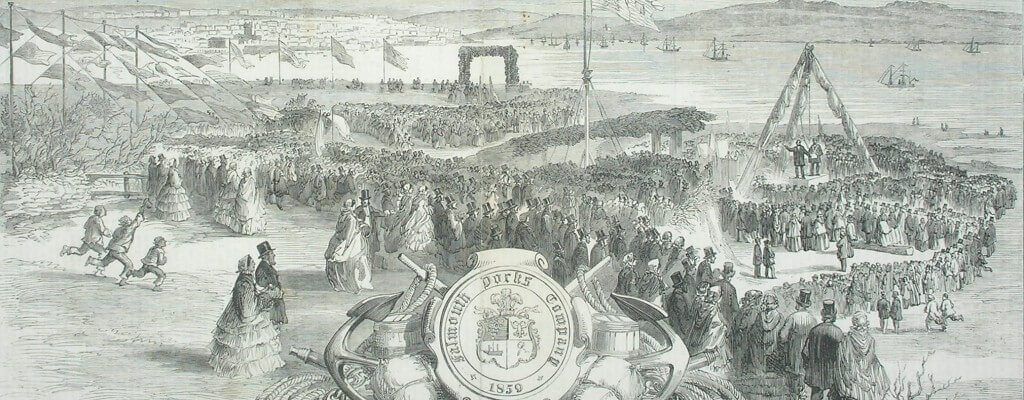Falmouth Docks
The Port of Falmouth’s greatest asset is its deep and sheltered harbour. Many mariners throughout the centuries have long regarded Falmouth as the “First and Last Port” for ships crossing the Atlantic seeking shelter, emergency repairs or to refuel. Internationally renowned as a Port of Refuge and casualty reception port, Falmouth Docks have played a major role in the ship repair industry for 150 years.
The Burghley map of Falmouth Haven now in the British Museum clearly shows Porhan Withe, where Falmouth Docks are sited today. Porhan Withe roughly translated means “Port of shelter or protection.”
Mr. James Abernethy, a talented engineer from Aberdeen was invited to draw up plans and costings for a dock system. Lord Falmouth laid the granite foundation stone on 28 February 1860. The Danish sailing vessel Frederick VII became the first ship to use the docks in 1861.
The arrival of the Cornish Railway in August 1863 provided a vital transport link to the rest of the country for the docks and town. The docks could now handle more imports and exports with the railway also opening up Falmouth for tourists.
Today the docks handle all types of vessels from luxury yachts and warships, to tankers and cruise liners.
Bunkering
The Port of Falmouth stands at the gateway to the Western Approaches, close to the world’s busiest shipping lanes. Ships using the Channel have to burn low sulphur fuel oil to reduce emissions. Falmouth is now an international bunkering (refuelling) port.
Did you know?
Falmouth Harbour and the Carrick Roads form the third deepest natural harbour in the world, and the deepest in Western Europe.
The Queen Elizabeth dock holds 128 million litres or water! It can be emptied in three hours.
The Docks lookout point (towards Pendennis Point) affords superb views across the site and Falmouth harbour. Do make sure you head on up there when in Falmouth.





